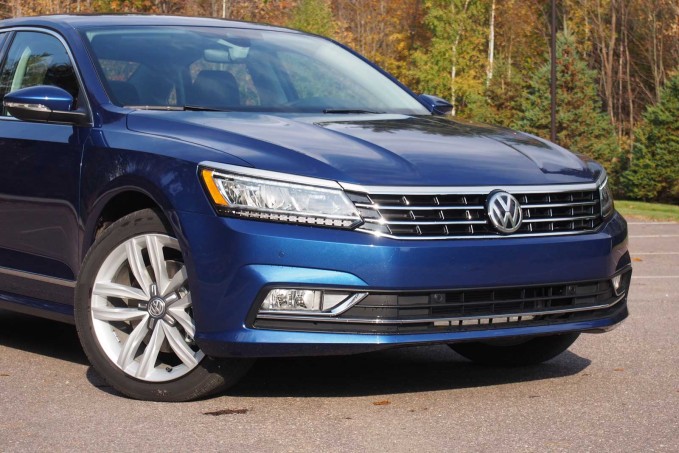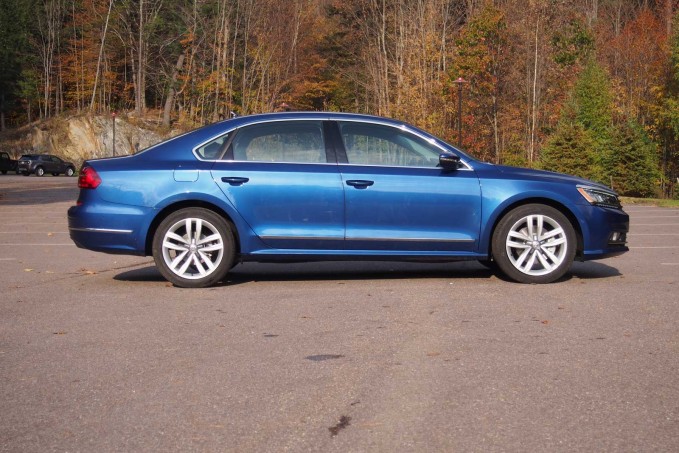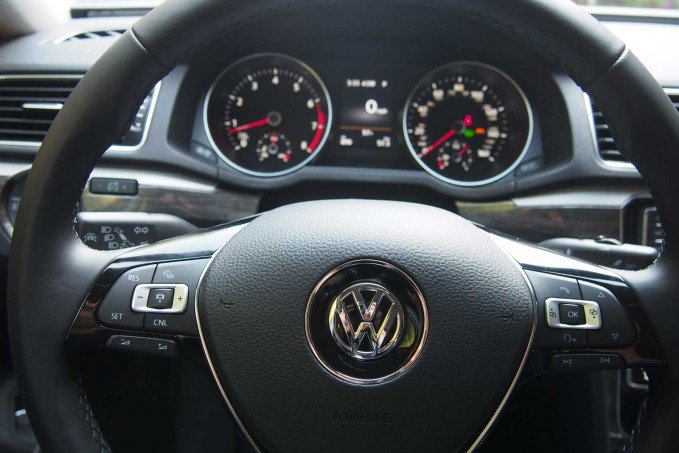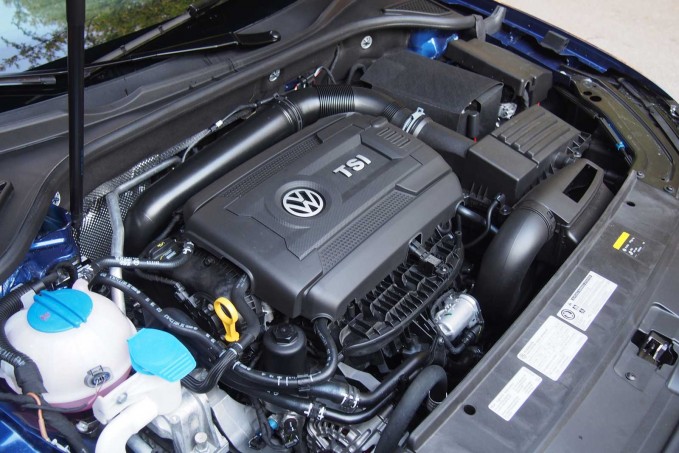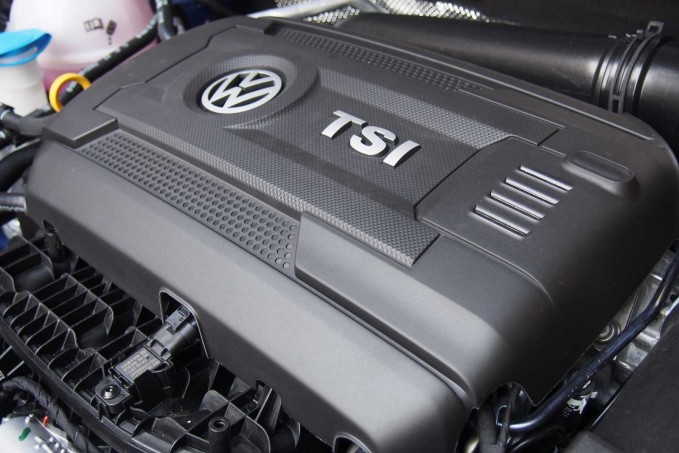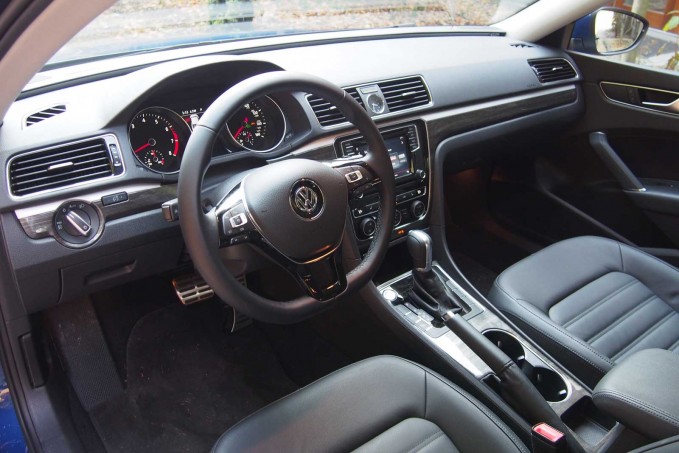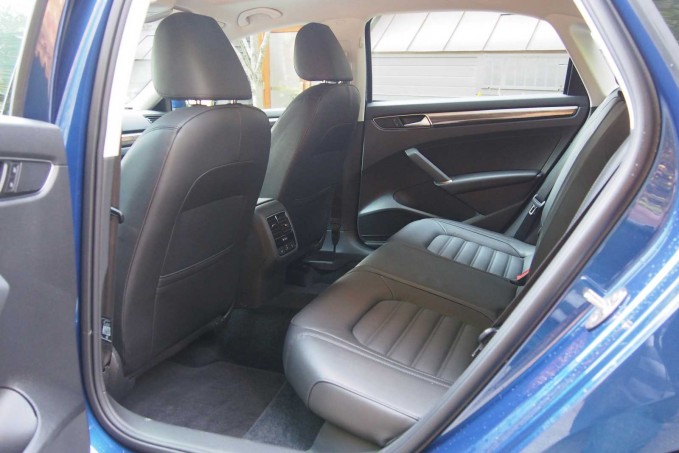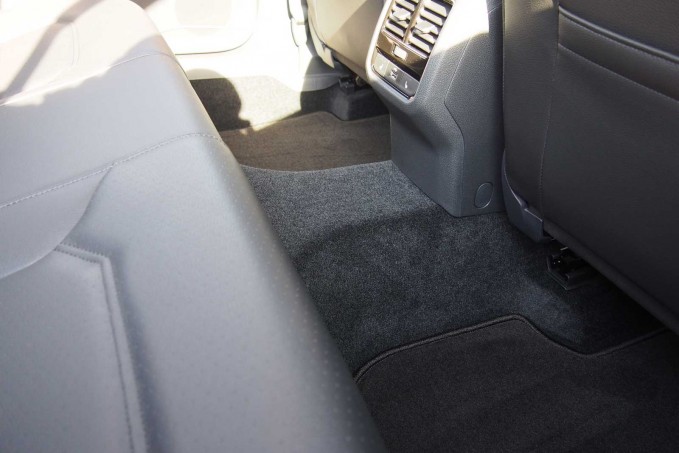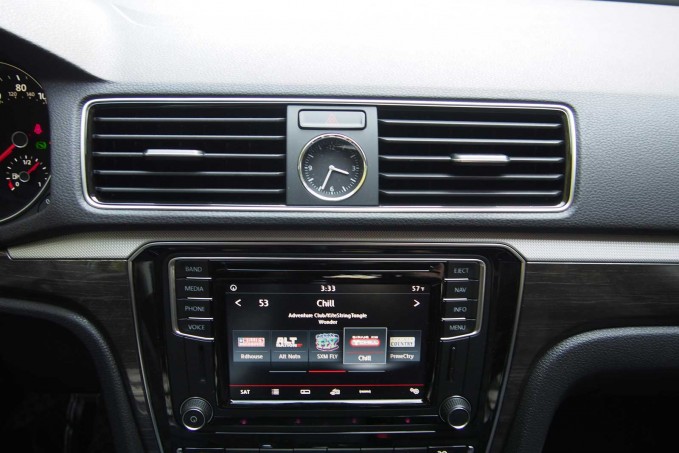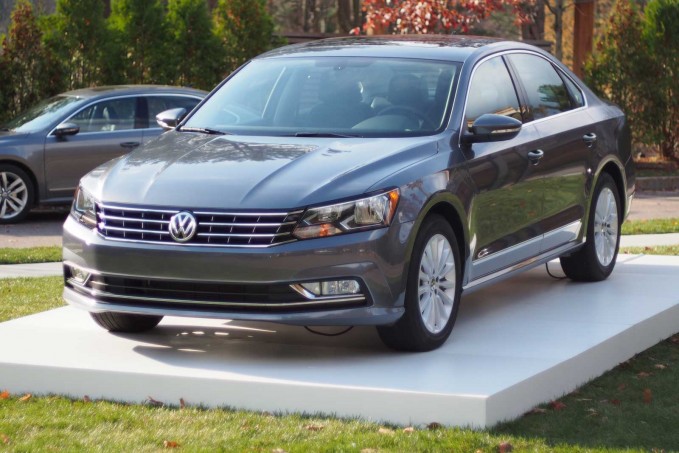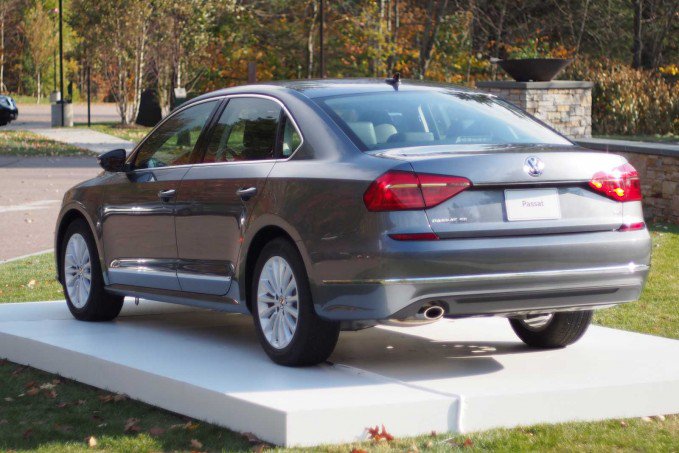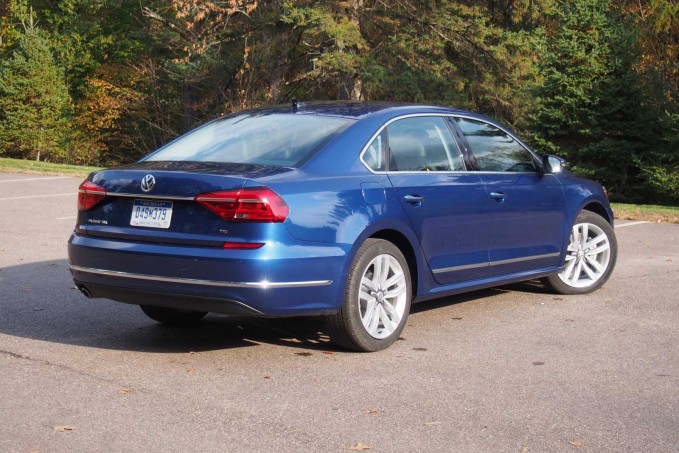For weeks now, any news about Volkswagen has been dominated by the company’s ongoing emissions dustup; anything else this German automaker is involved with or working on has been obscured by a diesel smokescreen.
Even though recent headlines have focused almost exclusively on its TDI troubles, believe it or not, VW continues to build cars and develop new technology. Clearing the air, they’ve quietly updated their Passat midsize sedan for 2016 to keep up with rivals in this highly competitive segment.
It’s New. Can You Tell?
The current generation of this car debuted four or five years ago to a collective yawn from automotive reviewers and pundits alike. Many decried the Passat’s styling, which admittedly was rather sleepy, even by four-door standards. And for better or worse, this lack of visual stimulation continues with the 2016 model.
However, just because it lacks flashy design elements and curbside pizzazz doesn’t mean it’s unattractive. I find the Passat to be quite handsome, in a wholesome, Protestant work ethic sort of way. With restrained simplicity, there’s a certain honesty to its design that brings to mind a church pastor, a Bible-thumping pulpiteer with four wheels and room for five.
The 2016 Passat is new from the A-pillar forward, gaining a fresh and more sculpted hood, slimmer headlamps and an even a more substantial grille. Front and rear, LED lighting is available.
Aside from these changes, the car also gains a new rear bumper and trunk lid, the latter of which features a wider license plate cutout. An R-Line trim is also new this model year, which adds unique rocker panels, an updated front bumper and unique 19-inch wheels, among other things.
Inside, designers made a number of minor changes to the Passat’s cockpit as well. Its instrument cluster and steering wheel are new, borrowing cues from the company’s Golf models. The dashboard’s upper portion has been subtly reworked and brightening things up a little in what is otherwise a thoroughly Germanic cabin is a sprinkling of chrome accents.
Overall, the 2016 Passat is clean and elegant, if still a little boring. However, this is a design that will withstand the test of time. These cars should look handsome 20 years from now. Will, say, a “fluidic sculpture” Hyundai Sonata survive as well? I suspect not.
Powertrain Prowess
Two engines are offered in this car and both of them feature sparkplugs. If you were hoping for a compression-ignition option, you’re going to have to wait. VW has withdrawn its emissions certification from the EPA for TDI models and, consequently, it’s unknown when they’ll be available again.
In happier news, both of the Passat’s gasoline-burning propulsion units are refined and economical. Serving the entry-level market is a 1.8-liter turbocharged four-cylinder, the only force-fed base engine in the segment. It delivers a more-than-adequate 170 horses along with 184 lb-ft of maximum torque. As for transmissions, the only one available is a six-speed automatic equipped with a torque converter.
If something with additional cylinders is more your style, then Volkswagen is happy to offer you a narrow-angle V6. This 3.6-liter six-shooter delivers a snarly 110 more horses than its four-cylinder brother. Torque clocks in at an impressive 258 lb-ft when rapidly oxidizing premium-grade gasoline.
Further enhancing this bent-six’s performance is a dual-clutch automatic. It may have the same number of ratios as the 1.8T’s gearbox, but it shifts much quicker; unexpectedly, it’s also more refined.
Space Ship
Like its exterior, the 2016 Passat’s cabin is essentially the same as today’s model and that isn’t necessarily a bad thing. It’s cleanly styled, solidly constructed and more spacious than a shipping container.
Its overall design theme may be minimalistic, but the interior decorating makes up for some of this insipidness. Most of the materials are high quality, especially the large swath of soft plastic the upper dashboard is constructed of. It’s nicely grained and wonderfully squishy to the touch should you prod it with an inquisitive digit.
Regrettably, the Passat’s hard materials aren’t quite as luxurious. Some of the injection-molded components look a bit too shiny, especially in cars with black interiors, though this isn’t as noticeable with beige trimmings.
But one area where the Passat trumps rival sedans is in backseat space. Its aft accommodations are simply epic; Paul Bunyan could stretch out in this car.
Likewise, its trunk is vast, measuring 15.9 cubic feet. Making this space particularly useful is a low lift-over height and a wide opening.
Despite the generosity of its cabin, this car’s seats aren’t all that comfortable. They’re too hard and flat to truly coddle your backside. Bolstering really isn’t needed in a sedan of this class since drivers are more concerned about cutting consumption than carving corners, but a little bit of contouring would go a long way to improving things.
Additionally, the Passat is a front-wheel-drive car, so why does it have such a giant hump in the rear floor? This hungry monster devours foot space that should belong to the center passenger. Why does this tunnel have to be so large?
Advanced Technology
Like other cars, Volkswagen has fitted its Passat with many of the latest driver-assistance features. A rear-view camera is standard, as is automatic post-collision braking. Of course, if they really want to be on the leading edge, customers can also opt for things like adaptive cruise control, blind-spot monitoring, lane-departure warning and park assist.
Beyond all of these goodies, this sedan is also available with a new generation of infotainment technology. Three different head units are offered and they come with either a 5- or 6.3-inch display. Depending on the version, pinch-to-zoom is included for natural interaction. In addition to this, Apple CarPlay, Android Auto and MirrorLink technologies are supported for plug-and-play smartphone integration.
The Drive
Given the Passat’s spacious cabin and generous exterior dimensions, it should come as no surprise that this machine drives like a large car. Evaluating a 1.8T SE model revealed a suspension setup that seemed a little under-damped; large inputs such as hitting a dip in the road at speed resulted in a bit of extra up-and-down body movements, an encore presentation of the initial impact.
As for steering, the Passat’s is a little too light, never quite getting heavy enough. Of course, you want low-effort turning at parking lot speeds, but a bit of extra heft would be appreciated to provide a more connected feel once underway
Like the company’s larger 2.0-liter turbocharged four-cylinder engine, the Passat’s one-eight is incredibly smooth; in fact, it produces less perceptible vibration than the larger V6.
Despite its petite displacement, this engine provides a broad operating range, really coming on strong at about 3,000 rpm and pulling with vigor until about five grand on the tachometer. The 1.8T is powerful enough, though not entirely eager. However, if you opt for this engine, as the vast majority of Passat buyers probably will, you’ll do just fine.
The four-cylinder engine may be super refined, but its transmission isn’t quite as well mannered. This six-speed slushbox can feel a bit ragged at times, with abrupt, ill-timed shifts. It wasn’t an issue with every gear-change, but it happened often enough during my drive to cause concern. Curiously, the DSG automatic in V6-powered cars is markedly more refined, a total role reversal. Usually it’s dual-clutch units on the receiving end of scorn, but not in this instance.
Adding another feather to its cap, the Passat is remarkably fuel efficient. Models
with the turbo engine sticker at 25 miles per gallon city, 38 highway and 29 combined. Six-cylinder models are a good bit less economical, returning 20 around town and 28 on the interstate, figures that make for an average of 23 mpg.
In real-world testing a Passat 1.8T SE returned an indicated average of 32 mpg, which is certainly praiseworthy.
The Verdict: 2016 Volkswagen Passat Review
With an unusual blend of plusses and minuses, the 2016 Volkswagen Passat may seem a bit conflicted. Fortunately, none of its shortcomings are necessarily deal breakers.
Furthering its appeal, pricing remains essentially unchanged from last year. A base model with the four-cylinder engine and starts at $22,440. The 1.8T SE with the technology package we evaluated cost a little less than 30 grand, including $820 in delivery fees. Six-cylinder models start at north of $37,000.
If interior space, economical operation and innocuous design matter, this VW could be the car for you. However, if driving dynamics, style and overall refinement are more important there are probably better options.
Got something to say? Jump on our Volkswagen Passat Forum and let your voice be heard!







